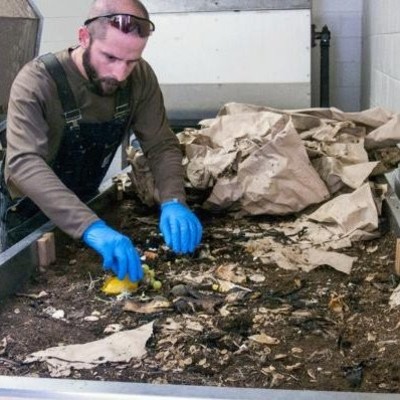According to this professor, the stat of 10 rivers being responsible for 90% of plastic pollution was cited incorrectly. Instead, the studies that were cited in the media said that OF THE PLASTICS coming from RIVERS...Read more→
According to this professor, the stat of 10 rivers being responsible for 90% of plastic pollution was cited incorrectly. Instead, the studies that were cited in the media said that OF THE PLASTICS coming from RIVERS (which account for 15-20% of plastic pollution), 90% comes from 10 rivers. . . very different! Article and link below.
Facts and Myths on the Origins of Plastics Entering the Oceans - Dispersing the ‘10 Rivers Myth’
https://www.iswa.org/media/publications/presidents-blog/prezsezmore/article/facts-and-myths-on-the-origins-of-plastics-entering-the-oceans-dyspersing-the-10-rivers-myth/1383/ 2
Category: ISWA BLOG
This article was jointly written by Professor David C Wilson, Visiting Professor in Resource and Waste Management at Imperial College London and Immediate Past President of CIWM, the UK professional body for resources and waste; and Antonis Mavropoulos, President of ISWA.
Plastics only enter the ocean when they are not being actively managed; if they are not being managed, they are not being measured. So, by definition, we cannot know exactly how much plastics are entering the oceans or where they come from, and therefore must rely on estimates that are provided by modelling studies. The problem starts when those estimates are misinterpreted or misunderstood generating false headlines and creating serious confusion and, potentially, misleading policy responses. This is exactly what happened with the recent headlines like “10 rivers deliver the bulk of ocean plastics” or “more than 90% of plastics in oceans comes from just 10 rivers”.
What are the outcomes of the modelling studies?
At present, the best information we have on quantities of plastics entering the oceans comes largely from three modelling studies. Many scientists are currently working on improving our estimates, both by refining the assumptions made in the models, by improved modelling and by actual measurements of the weight and type of plastics entering rivers and the sea under specific local conditions; so, the available data should improve over the next few years. However, in the short term we need to rely on the early modelling studies, so it is important that their results are reported and used correctly.
The Jambeck et al. paper estimates that some 4.8-12.7 million tonnes per annum (generally simplified to ‘8 million tonnes’) comes from mismanaged solid wastes generated within 50 km of the coast, of which more than 50% comes from just five east Asia countries. Then two 2017 papers looked at the additional contribution coming from further inland via rivers. Lebreton et al. came up with an estimate in the range of 0.79-1.52 million tonnes, of which 67% came from the top 20 polluting rivers, mostly in Asia; while Schmidt et al³ first estimated 0.41 – 4 million tonnes, with more than 90% of that coming from 10 major rivers in Asia and Africa; they later corrected their paper⁴, revising their estimate down to 0.47-2.75 million tonnes. These two studies ultimately agreed moderately well, with a mean incremental contribution from rivers around 1.2-1.6 million tonnes. Combining all the complementary modelling studies, the best estimate of the total weight of plastics entering the oceans is around 9-10 million tonnes per annum.
How the outcomes were transformed to misleading headlines?
Unfortunately, some journalists isolated the phrase ‘The 10 top-ranked rivers transport 88−95% of the global load into the sea’ from the abstract of the Schmidt et al. paper, although reading just the title and the whole abstract it is clear that it refers to the global plastic debris inputs from rivers, only, into the sea. Apparently, these journalists could not be bothered to access the full paper, which to be fair does sit behind the journal’s paywall; and did not use the earlier Lebreton et al. open access paper. As a result, they misinterpreted the quoted sentence to mean that ‘more than 90% of all plastics entering the ocean comes from just 10 rivers’, rather than as 90% of the incremental 15-20% contribution from rivers. Anyone could easily understand that this is not true just comparing the percentages of the three complementary studies: even the original the 0.41 – 4 million tonnes estimated by Schmidt et al. can’t be 90 or 95%, neither of the 8 million tonnes estimated by Jambeck et al. nor of the 9-10 million tonnes total weight of plastics entering the oceans annually.
This misinterpretation, what we refer to as ‘the 10 rivers myth’, has now been picked up and repeated so many times that it has become an alternative fact, when it is clearly ‘fake news’. This is important, because it affects how resources are deployed to reduce plastics entering the ocean.
In the age of social media, it is near impossible to ‘put the genie back in the bottle’. Nevertheless, all professionals working in the field need to be aware of both the real data and the myth; assist journalists to get their facts correct; and counter specific instances of fake news. Climate change deniers challenge the data, even though the threshold for evidence used in IPCC reports is set very high. For ocean plastics, our data are always likely to be rather ‘flaky’. So, it is important that we all report and use correctly our current three best data sources, rather than turning one into fake news.
References:
1 Jambeck J.R. et al., 2015. Plastic waste inputs from land into the ocean. Science 347, 768-771
² Lebreton L.C.M. et al., 2017. River plastic emissions to the world’s oceans. Nat. Commun. 8, 15611 doi: 10.1038/ncomms15611
³ Schmidt C., Krauth T. and Wagner S., 2017. Export of plastic debris by rivers into the sea. Environ. Sci. Technol., 51 12246–12253
⁴ Schmidt C., Krauth T. and Wagner S., 2018. Environ. Sci. Technol., 52, 927−927 Read less






